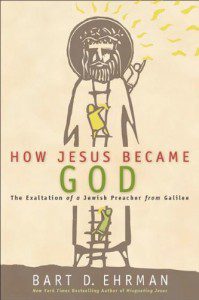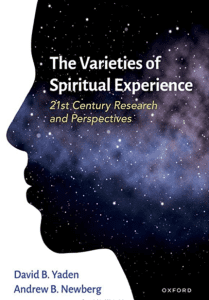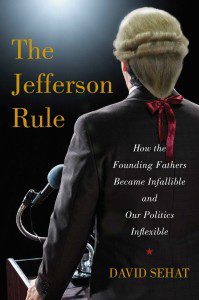I suspect that some people might be surprised to learn that in many Unitarian Universalist congregations both Christmas Eve candlelight services and Easter Sunday services are some of the highest attendance Sundays of the year. Admittedly, Easter could seem like an odd time to attend a Unitarian Universalist congregation. After all, the Unitarian half of our heritage arises from the heretica” view of affirming the humanity of Jesus and rejecting his divinity — or saying that any way in which Jesus is “divine” is the same sense in which all of us have the potential to mediate the sacred in this world.
But, of course, the word heresy comes from the Greek word for “to choose.” Heretics are those who choose for themselves what to do or believe as opposed to allowing a religious hierarchy or tradition to choose for them. In that sense a UU congregation — or a progressive Christian congregation — can be one of the most empowering places to celebrate Easter because you will be challenged to discern for yourself the meaning of Easter for today.
The Southern Baptist church of my youth taught me that Jesus was the center of history: that the bodily resurrection of Jesus metaphysically changed life, the universe, and everything. And Western Civilization came to divide even our calendar into B.C. (“Before Christ”) and A.D. (anno domini, “In the Year of Our Lord”). But as I grew older and learned more about science, the less sense that claim made. If Jesus’s human body was resuscitated after three days and later ascended “up” past the clouds, we know now that heaven is not “up.” The moon, Mars, and more than 100 billion galaxies are “up”! And we know that the Universe not 6,000 years old, but 13.7 billion years old — and that our planet and species are merely one infinitesimal part — so seeing the two thousand year old “resurrection” of one ancient spiritual teacher as the most important event in the universe, no longer makes sense. Jesus becomes “de-centered.” This insight is one of many reasons that UUs continue to value the Christian tradition, but we place it not as our only source, but as one among a total of Six Sources of wisdom, which include all the world’s religions as well as modern science.
And in this blog post I would like to explore both the history of how the resurrection stories emerged as well as what meaning those  stories may continue to hold for us today. If you are curious to learn more about the first half of that equation, I would recommend to you the new book from the historical Jesus scholar Bart Ehrman’s How Jesus Became God: The Exaltation of a Jewish Preacher from Galilee. [Parenthetical references refer to this new text from Ehrman.] This book can be seen as an accessible answer to one of the of the best questions I’ve ever heard asked about the resurrection — which is John Dominic Crossan’s question, “How many years was Easter Sunday?”
stories may continue to hold for us today. If you are curious to learn more about the first half of that equation, I would recommend to you the new book from the historical Jesus scholar Bart Ehrman’s How Jesus Became God: The Exaltation of a Jewish Preacher from Galilee. [Parenthetical references refer to this new text from Ehrman.] This book can be seen as an accessible answer to one of the of the best questions I’ve ever heard asked about the resurrection — which is John Dominic Crossan’s question, “How many years was Easter Sunday?”
The traditional orthodox answer is that after Jesus’ crucifixion, his followers found an empty tomb and were told about (or encountered) the resurrected Jesus. And that eyewitness account is what has been passed on to this day. But as is almost always the case, the truth is much messier and more complex. And those resurrection stories were likely years in the making.
One of the most powerful and revealing ways to study the four canonical Gospels (Matthew, Mark, Luke, and John) is with a Gospel Parallels, which lines up the similar parts of each Gospel in columns so that you can easily compare and contrast the differences. And in the case of the four resurrection accounts, you quickly see that the Gospels disagree about who was the first person to go to the tomb, whether the stone was already rolled away, whether they immediately told others, what the person (or people) at the tomb told them, whether (and where) they saw Jesus (134). What we know as the Easter story was years in the making. And these irreconcilably different details show us traces of how the resurrection stories changed over time in the different communities that produced the final forms of the canonical Gospels. The different stories about Jesus’ resurrection were formed in the telling and retelling.
A similar dynamic is the case with the story of how Jesus became God, which did likely turn on the origin and develop of the resurrection stories. As you may know, one of the trickiest parts of studying early Christian history is that the earliest writings we have are from the apostle Paul from the 50s, two decades after the death of the historical Jesus around 30 C.E. Even though Jesus lived before Paul’s letters were written, Mark, the first Gospel about Jesus’ life wasn’t written until around the year 70, forty years after Jesus’ death and twenty years after Paul started writing.
And if you look at the Epistle to the Romans, the last and most sophisticated of Paul’s letters (written about 60 C.E.), the very beginning of the first chapter is fascinating if you examen it closely and resist seeing it through the lens of the orthodox theology about Jesus that didn’t fully form until fourth-century, more than 300 years after the historical Jesus. So, trying to set aside what later orthodox theologians came to say about Jesus, I invite you to hear Romans 1:3-4 in which Paul says that Jesus “was descended from the seed of David according to the flesh, who was declared to be Son of God with power according to the spirit of holiness by resurrection from the dead….” The Greek word translated as “declared” can also be translated into English as “appointed” or “designated.” Scholars speculate that Paul is likely quoting an early Christian creed in which Jesus was understood to have become the “son of God” at his Resurrection (119-225). From this perspective, the historical Jesus had been a human, who understood himself to be the messiah, destined to restore the glories of the Davidic monarchy of a millennia ago in which a Israelite king (not a Roman emperor, as in Jesus’s day) ruled over a united Israel. And from this perspective, the resurrection was God saying “No” to the crucifixion, God overturning the power even of Roman state execution, and thereby declaring the Jesus not Caesar is Lord.
If we read closely, we see a similar perspective in Peter’s Pentecost sermon at the beginning of the book of Acts. Consider Acts 2:29-36:
29 “Fellow Israelites, I may say to you confidently of our ancestor David that he both died and was buried, and his tomb is with us to this day. 30 Since he was a prophet, he knew that God had sworn with an oath to him that he would put one of his descendants on his throne…. 32 This Jesus God raised up, and of that all of us are witnesses. 33 Being therefore exalted at the right hand of God… 36 Therefore let the entire house of Israel know with certainty that God has made him both Lord and Messiah, this Jesus whom you crucified.”
From this view, it is not that Jesus was always God incarnated as a human, but rather that God through the resurrection, exalted Jesus to divine status (227-229).
As we move forward in time chronologically, Jesus is declared to be divine at earlier and earlier points and to be of an increasingly higher stature of divinity:
- We have already seen in the first chapter of Romans, written three decades after the historical Jesus, evidence of Jesus being exalted at his resurrection.
- A decade later in the first chapter of Mark, the earliest of the canonical Gospels, we see Jesus declared to be divine not “on the third day” after his death, but at the beginning of his public ministry, at his adult baptism, when God speaks from heaven and says, “You are my Son, the Beloved; with you I am well pleased.”
- Moving another decade forward in time, we see in Matthew and Mark putting Jesus’ divinization even earlier. Now it is at his birth from a virgin. In Luke chapter 1, an angel tells Mary, “you will conceive in your womb and bear a son, and you will name him Jesus. 32 He will be great, and will be called the Son of the Most High, and the Lord God will give to him the throne of his ancestor David.…”
- Finally, moving forward another decade chronologically, in John chapter 1, we see Jesus as divine since before Creation: “In the beginning was the Word, and the Word was with God, and the Word was God.”
Comparing the first chapters of these Christian writings, we see a progressive one-upmanship with each new writer’s opening having a splashier, more spectacular, more special effects-filled headline about Jesus’ divinity.
To take a step back, one of the most helpful part of Ehrman’s new book on How Jesus Became God is how he sets this dynamic of increasing divinization in its historical context. Claiming that Jesus was adopted as God’s son either at his resurrection or baptism was neither an insult nor unprecedented. In the Greco-Roman context, “The adopted son… — who was normally adopted as an adult — was adopted precisely because of his fine qualities and excellent potential. He was made great because he had demonstrated the potential for greatness, not because of the accident of his birth.” Most famously, decades before Jesus’ birth, it was not Caesarian (Julius Cesar’s biological son by Cleopatra) who was declared divine, son of god, and heir, but Cesar’s adopted son Octavian, who became the divine Emperor Augustus Caesar (233).
Looking even earlier and at the Jewish context, it is easy to get confused from listening to Handel’s Messiah to think that the text from Isaiah 9:6-7 that Handel famously and gloriously sets to music is about Jesus: “For a child has been born for us, / A son given to us; Authority rests upon his shoulders; / And he is named / Wonderful Counselor / Mighty God, / Everlasting Father, Prince of Peace…” But the prophet Isaiah is not talking about Jesus; he’s speaking about coronation of King Hezekiah in Isaiah’s own day (79-80).
And scholars tell us that the Israelites likely learned this way of talking about kings as divine from how the Egyptians talked about their Pharaoh. But it is vital to clarify for both Egypt and Israel that calling one’s ruler god “did not mean that the king was on a par with the great gods, any more than the Roman emperor was thought to be on a par with Jupiter or Mars. But he was a god” (78). In the Greco-Roman world, you have what scholars call a “Divine Pyramid” with One God at the top (“the Greek Zeus, the Roman Jupiter, or some unknown and unknowable God”), then the Great Gods (such as the Greek Poseidon, Hera, Aphrodite, Artemis, Dionysus or Roman Neptune, Juno, Venus, Diana, and Bacchus), then local gods, then demigods (often “born from the union of a God/Goddess and a human” such as Hercules). So when you trace the pattern of Jesus being declaring increasingly divine over the passing decades (at his resurrection, then adult baptism, then birth, then before Creation) you can see the perception of Jesus ascending the Divine Pyramid. And the sense in which the ancient Israelite kings, the Roman Emperors (or Jesus at least at first) were called god or divine is not as co-equal with the one God at the top of the pyramid, but more as humans having been raised up to a higher level on the divine pyramid.
And by the time we get to the fourth-century, the debate at the Council of Nicea is not — as Dan Brown could confusingly lead you to believe — between whether Jesus was human or divine, but whether Jesus was co-equal and of the same substance as God (which was the prevailing view that won), or whether Jesus, as son of God, was created by God of a slightly lower divine status, even though firstborn of all creation, which was the view of the Arians (251-282).
Now, I don’t have time to go into the details, but to me the most fascinating part of Ehrman’s current book is his fairly compelling exploration of the scholarly argument that the historical Paul may have been a proponent of the belief that Jesus was originally an angel (a step or two up on the divine pyramid already), who then became human only to be eventually exalted by God at the resurrection to higher than his original stature.
To trace the origins of the three hundred year old story of how Jesus became increasingly exalted, Ehrman sees the resurrection accounts as related to the countless stories in both the ancient and modern world related to humans seeing visions of loved ones after those loved ones have died (193-204). Now, whether think such experiences are veridical — that is, whether they correspond to a reality that is more than a hallucination, more than a product of the grieving person’s mind — depends in large part of your personal experience and worldview. For now, suffice it to say, that one theory of how we came to have four such starkly different details in the resurrection stories in Matthew, Mark, Luke, and John is that they are influenced by the different visions (and stories about such visions) told in the wake of Jesus’ death by different influential leaders in his movement such as Peter, Paul, Mary, James, and Thomas (192).
And there is so much more to say about every angle of this subject, but for now on this Earth Day, two days after Easter Sunday, I am not satisfied to end with speculations about what did or did not happen 2,000 years ago. To quote one of my theological mentors Clarence Jordan, what matters today about the Easter story is “not a vacant grave, but a spirit-filled fellowship. Not a rolled-away stone, but a carried-away church.” What matters is whether we are living in the compassionate, justice-filled way that Jesus showed us is possible.
Easter Sunday comes two days after Holy Friday, when we remember the tragic and cruel execution of Jesus, the invitation for us today has nothing to do with seeing the Jesus’s crucifixion as a sacrifice for the sins of the world. As regular readers of this blog have seen me quote before, that’s the “Vampire Christianity” of only wanting Jesus for his blood. The invitation is to see and confess that — from Jesus to Oscar Romero to Gandhi, JFK, MLK, and RFK— execution or assassination is what we humans have done all too often with our prophets: cutting short the lives of those with the courage to speak the truths we so desperately need to hear.
We rightly mourn the loss of these prophetic figures, often cut short in their prime, but by and large the systemic injustices and inequalities they called us to change remain unmoved. In our own day the prophets of the Occupy movement warn us about the wealth gap of a “New Gilded Age” that is eviscerating our middle class. And climate scientists warn us of coming climate disaster. A recent lament put it this way:
The climate was one of those facts. We did not think it could change. That is, we always knew we could do a great deal of damage to this planet, but even the most hubristic among us had not imagined we would ever be able to fundamentally change its rhythms and character, just as a child who has screamed all day at her father still does not expect to see him lie down on the kitchen floor and weep.
But that is what our planet is beginning to do. And we as a species can kill our world’s climate as surely as we have killed world-historical figures from Jesus to Gandhi to King.
But the Universalist half of the UU tradition (which arises out of Christian Universalism) teaches that our hope does not have to come from arguments about what did or didn’t happen after Jesus’ death 2,000 years ago — or what will or won’t happen after our deaths. Universalism is about moving from a rejection of the idea of hell in the next world to loving the hell out of this world and everyone in it. Universalism reminds us not to selfishly try to store up for ourselves treasures in heaven, but to build a better world here and now for ourselves, our children, and future generations.
It’s not about whether “He is Risen.” It’s about whether we are willing risk rising up!
It’s not about whether there was a resurrection 2,000 years ago, it’s whether the way of Jesus can leads us to a new nonviolent insurrection today as it did in India with Gandhi, in the Civil Rights Movement with Dr. King, and most recently with Occupy Wall Street.
And it’s no coincidence that Easter and Resurrection come at springtime. Spring is a glorious time of resurrection and rebirth in nature, of new life and new hope — a time ripe for reclaiming the truth that “we are the ones we have been waiting for.”
This Eastertide, what within you aches to rise up and be reborn?
Who around you desperately needs renewed hope, a new word of encouragement?
What part might you individually or we collectively play in rising up to ensure the continued blooming of abundant, diverse life on this one planet?
Notes
- “The Divine Pyramid” — Bart Ehrman, The New Testament: A Historical Introduction to the Early Christian Writings, 24-26.
The Rev. Dr. Carl Gregg is a trained spiritual director, a D.Min. graduate of San Francisco Theological Seminary, and the minister of the Unitarian Universalist Congregation of Frederick, Maryland. Follow him on Facebook (facebook.com/carlgregg) and Twitter (@carlgregg).
Learn more about Unitarian Universalism:
http://www.uua.org/beliefs/principles












